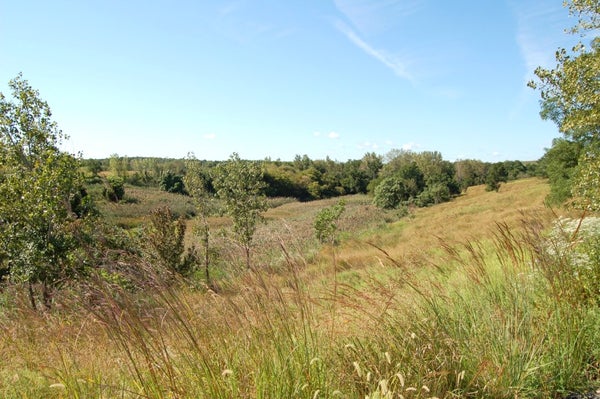This article was published in Scientific American’s former blog network and reflects the views of the author, not necessarily those of Scientific American
There are a lot of nice stories circulating about the return of wildlife and the healing of nature as humans pause our activity. However, this slowdown is not all good news for the environment. New York City, for example, has suspended its organic recycling program. That means tens of thousands of tons of garbage that last year would have been recycled will this year find their way to a landfill instead.
It’s not as though many people in New York City will notice the program has been suspended. Only half the city's neighborhoods have the brown curbside bins. And only about 10 percent of those who do have the bins participate at all. Still, that adds up to 50,000 tons worth of organic material recycled every year, enough to fill nearly 4,000 garbage trucks.
When food scraps and other organic materials decompose, they produce methane, which if let loose can be destructive to the atmosphere, but when captured in a controlled recycling program can be put to use as an alternative energy. Recycling organic matter locally also means all those tons of garbage don’t need to be trucked out of state as far away as South Carolina. Plus, there is the physical byproduct of fertilizer, which can be sold on the market or used in community gardens.
On supporting science journalism
If you're enjoying this article, consider supporting our award-winning journalism by subscribing. By purchasing a subscription you are helping to ensure the future of impactful stories about the discoveries and ideas shaping our world today.
Until recently, I was a part of that very small group of New Yorkers who recycled their food scraps. And I did so diligently. Every banana peel, every apple core, every Wednesday went down to the curb and was hauled away by the sanitation workers to become fertilizer or biogas, something other than more landfill. My contribution was probably only five pounds a week. But it felt good to know that I was reducing my impact in this small but steady way.
Now those tens of thousands of tons of trash will be hauled away by diesel truck to sit and emit methane in a landfill. It feels like an unforced error, as though we are making mistakes we have already begun to correct. Whatever you call it, it’s definitely a step backwards in our fight against climate change.
New York City's former landfill, once the world's biggest, is a best-case scenario for what can happen to millions of tons of garbage. Freshkills Park, when opened in 2035, will cover 2,200 acres, around three times the size of Central Park. It’s being designed by James Corner Field Operations, the same firm that designed the High Line in Manhattan. It’s not the first landfill-to-park project, but it is the biggest.
“It’s probably best to think about it like a national park,” says Cait Field, science and research development manager at Freshkills Park. “There will be a trailhead and visitor’s center. The idea is that you wouldn’t really visit the whole park in one day.”
Freshkills Park was originally Fresh Kills Landfill. It was opened in 1948 by the controversial parks commissioner Robert Moses. It was only intended to receive city trash for three years, but instead took on garbage for more than half a century. At its height, that added up to nearly 30,000 tons of garbage per day.
In 1970, a former sanitation commissioner named Samuel Kearing wrote about a visit to the site in New York magazine: “It had a certain nightmare quality…. Fresh Kills had for thousands of years been a magnificent, teeming, literally life-enhancing tidal marsh. And in just 25 years, it was gone, buried under millions of tons of New York City’s refuse.”
In 2001, the dump finally closed. Though the work had really just begun. As Field says, “The trash isn’t going away. You can’t take it anywhere. It’s millions and millions of tons.”
So instead they capped it. There’s an impermeable liner keeping all the garbage and methane in place. Then there are a few layers of dirt, each with different consistencies for different purposes. There’s a gas vent layer and a drainage collection layer. It’s all pretty complex underneath even if it just looks like a grassy hill.
As for the methane, the park has hundreds of wells throughout the site to capture the gas. It’s enough to power 20,000 homes in Staten Island. It also means the capped mountains of garbage are technically deflating, though only slightly and very slowly at that.
Trees are tricky at Freshkills Park because their roots can’t go that far down before butting up against the cap layer. So, the park is mostly grasslands which have more shallow roots and also allows the staff to easily access the wellheads and other infrastructure.
It’s good news for the grasshopper sparrow. These birds are of conservation concern in New York State partly because their preferred habitat, tall grasslands, are very rare in the Northeast. Today, the largest crew of grasshopper sparrows in New York State call this former landfill their home. As do osprey, foxes, coyotes, deer and loads more.
I’ve been out to Freshkills Park twice. It’s beautiful. Standing there, you can’t help but wonder if New York City got lucky. This could have ended very differently for those mountains of garbage. Yes, it’s going to take another 15 years before the park even opens. Nonetheless, we are fortunate it worked out so well for Freshkills and New York City. Standing there, you realize why every banana peel and apple core really ought to be recycled.
Ideally, the organic recycling program gets reenacted in New York City before too long. Otherwise, here’s hoping there is some other similarly brilliant plan for all the new trash that will be coming soon.
